Nasal obstruction, often reduced to a simple blocked nose, is in fact a complex symptom that can indicate a variety of conditions.
It manifests itself as difficulty in breathing normally through the nose, resulting from a reduction or obstruction of the nasal passages.
Understanding nasal obstruction to fight it better
This is a condition where the nasal passages are blocked, reducing or preventing normal airflow.
This obstruction may be acute, occurring suddenly and for a short period, as in the case of a cold.
Or chronic, persistent over the long term, often requiring medical intervention.

💊Identifying the causes of nasal obstruction
The causes of nasal obstruction are as varied as they are frequent.
- A cold,
- allergic rhinitis,
- or even a deviated septum can all lead to that frustrating feeling of a blocked nose.
Did you know that even factors such as environmental changes or certain infections can cause inflammation of the nasal passages?
💊The different types of nasal obstruction
Nasal obstructions come in many forms, each with its own unique causes and symptoms
📌 Infectious obstruction, often due to colds or sinusitis, is characterized by excessive mucus production, leading to congestion.
📌 Allergies, on the other hand, cause inflammation of the nasal mucous membranes, leading to allergic obstruction marked by sneezing, itching and often a clear nasal discharge.
📌 Deviations of the nasal septum or the presence of nasal polyps represent structural obstructions, where discomfort is more physical, and may require surgical intervention for significant improvement.
📌 On the other hand, reactions to environmental irritants such as pollution or smoke can lead to irritative obstruction, with nasal congestion and irritation as the main symptoms.
Recognizing the symptoms of nasal obstruction
Signs like:
- difficulty breathing,
- a sensation of pressure in the sinuses,
- headaches,
- frequent sneezing,
- or a diminished sense of smell can all indicate nasal congestion.
More serious symptoms, such as:
- nosebleeds,
- facial pain,
- or a persistent cough.
Recognizing these signs is essential to understanding the extent of nasal obstruction and taking the appropriate steps to restore breathing comfort.
💊Knowing when it's time to consult a healthcare professional
If your symptoms worsen, persist beyond a few weeks, or if you experience:
- intense facial pain,
- loss of sense of smell,
- or breathing difficulties, it's time to see a specialist.
Similarly, a nasal obstruction that interferes with your sleep or your ability to carry out your daily activities is a red flag.
A doctor can assess your condition, determine the underlying cause of the obstruction, and propose a treatment plan to relieve your symptoms and improve your quality of life.

What natural remedies exist?
💊Lifestyle changes
📌 Consider adopting a nasal hygiene routine with regular irrigations using saline solutions or nasal sprays, which can clean the nasal passages and eliminate accumulated allergens.
📌 Incorporating a diet rich in natural anti-inflammatories and antioxidants can also support nasal mucosa health, as can adopting an exercise routine that improves blood circulation and boosts the immune system.
📌 It's also advisable to maintain a clean indoor environment to reduce the presence of allergens such as dust and dust mites.
📌 Remember to regularly change the filters on your heating or air conditioning system, and use an air purifier to reduce irritating particles in your home.
📌 Avoid smoking orexposure to second-hand smoke, as it can irritate the nasal passages and worsen obstruction symptoms.
For those who experience frequent nasal obstructions, practicing breathing exercises or yoga can help to better control breathing and reduce the frequency of obstructions.
💊What home remedies are out there?
Home remedies can offer effective relief for nasal obstruction without the side effects of medication.
📌 Steam inhalation, for example, can help decongest nasal passages, while nasal washes with a saline solution can cleanse nasal cavities, removing mucus and irritants.
📌 Simple techniques such as sleeping with your head elevated can also facilitate night-time breathing, contributing to better rest.
💊What are the advantages and limitations of natural treatments?
While natural remedies for nasal obstruction are popular and often beneficial, it's important to recognize their limitations.
These methods can be very effective for mild to moderate cases of obstruction, or as adjuncts to medical treatments, but they are no substitute for the advice of a healthcare professional, especially in severe or chronic cases.
Understanding the benefits and limitations of natural treatments enables individuals to make informed choices for their respiratory health, combining natural and medical approaches for optimum effectiveness.
What is the impact of nasal obstruction on quality of life?
Social interaction and leisure activities can also suffer, adding emotional stress to physical discomfort.
💊How to manage nasal obstruction at work?
Simple strategies such as regular use of physiological nasal sprays, setting up a desktop humidifier or organizing breathing breaks can help maintain nasal clarity and concentration.
Keeping colleagues and superiors informed can also help them understand and adapt working conditions, thereby maintaining productivity and well-being at work.
💊How do you manage nasal obstruction during your nights?
Nasal obstruction is closely linked to sleep disorders such as sleep apnea and snoring, disrupting the quality of night-time rest and, by extension, overall health.
Obstructed airways can lead to frequent sleep interruptions, unrefreshing sleep and daytime sleepiness.
Adopting measures such as using elevated pillows, practicing breathing exercises before bedtime, or using breathing aids can improve sleep quality and, consequently, quality of life.
💊How to manage nasal obstruction with social interactions?
📌 Firstly, be open to communicating about your condition with those around you, as this can help create an understanding and supportive environment.
📌 Practicing discreet breathing techniques can also help manage discomfort and stay focused during conversations.
📌 Finally, choose environments less likely to aggravate your symptoms, such as well-ventilated or non-smoking areas.
💊How to manage nasal obstruction with leisure activities?
📌 For outdoor activities, check pollen or other allergen levels if you're sensitive, and plan accordingly.
📌 For indoor activities, make sure the space is well ventilated and free of potential triggers.
If you're prone to nasal obstruction, opt for less strenuous activities that don't place excessive demands on your breathing.

- Choosing a selection results in a full page refresh.
- Opens in a new window.







